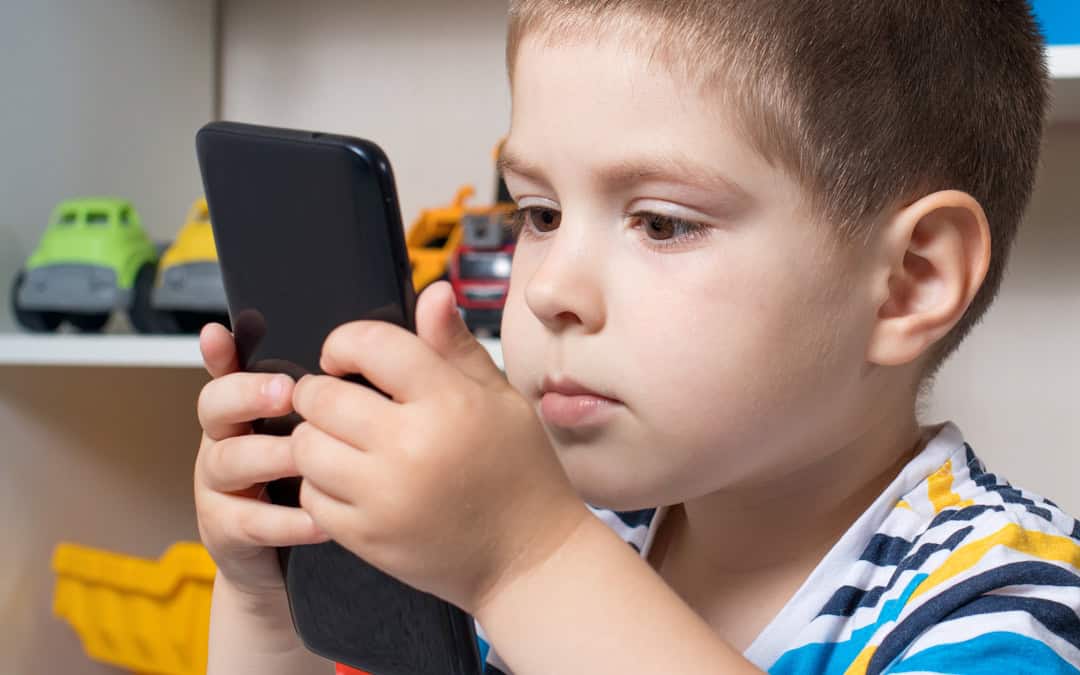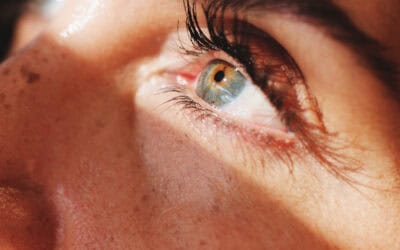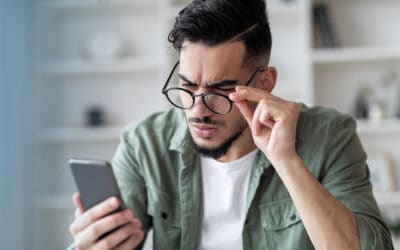A Growing Epidemic Among Children
Over the past few decades, myopia in children has become a global epidemic—and Pittsburgh families are no exception. In the past 40 years, myopia (also commonly called “nearsightedness”) has risen from 25% to 42% of the entire population in America. In the case of children, however, the trend is even higher with 1 out of every 4 parents having a child with the condition. Today, children and teens are more susceptible than ever to the condition. According to a recent study published in the journal of the American Academy of Ophthalmology, by 2050 over 50% of the world population will be myopic.
Today it is vital for parents to understand what’s going on and how to respond. Whether you have an inkling that your child is squinting at the whiteboard in class or you’re just being proactive, this article will explore the rising condition of childhood myopia, why it matters, and how you can ensure that your child is safe with effective long-term vision.
What Parents Need to Know About Myopia
Before learning about childhood myopia, you should understand how the eye is supposed to function. In an accurately functioning eye, light passes through the cornea and the lens and hits the retina directly. This clarity is how people can see things far away.
Myopia develops when a person’s eyeball is too long, or their cornea is too curved. Thus, when light enters the eye, it focuses in front of the retina instead of directly on it, resulting in blurry distance vision.
Alternatively, since proximal focus occurs correctly, close proximity objects are seen clearly. Myopia is typically corrected through prescription lenses to adjust how light enters the eye, or refractive surgery that reshapes the cornea to redirect focus.
Myopia is usually categorized by degree of severity:
- Low myopia (up to -3.00 diopters): Minor nearsightedness yet still needing correction for the majority of distance endeavors
- Moderate myopia (-3.00 to -6.00 diopters): More significant distance blurring with the possibility of greater ocular health issues later on
- High myopia (greater than -6.00 diopters): A complex situation which may put one at risk for retinal detachment, glaucoma or macular degeneration.
Since children’s eyes are still developing, myopia that is not treated usually progresses during childhood and adolescence. Therefore, treatment and evaluation are essential for positive results.
What Causes the Increasing Population of Myopia?
There is no single cause for the increase in childhood myopia. Instead, it appears to be a convergence of activities and environmental changes. The most significant, in terms of causation, is screen time, but not necessarily how many hours an engaged child spends looking at something, but instead, how far away that something is. Scrolling on a phone, three inches away from someone’s face, is quality attention and focus. That’s an ocular irritant relative to watching television from across the room or glancing out the window.
Focusing on something closer requires the eye to accommodate, to shift its optics into something more beneficially clear. Accommodation is work; its energy expended, forcing ciliary muscles to contract—stressing the system and over time, increased use suggests fatigue.
Prolonged use of such an accommodating focus could suggest an anatomical change, like elongation of the eyeball, creating myopia. In children, this is an even greater concern as their ocular systems are under development.
At the same time, children are also spending less time outdoors than children a generation ago. This is, perhaps, less alarming than it should be. Spending time outdoors encourages distance viewing, which allows that same ocular musculature to relax when clear images are present. Furthermore, natural sunlight seemingly protects certain avenues of ocular development—though the mechanics are still under investigation—but with school, homework, and recreational screen time, many children are confined to places with extended stays indoors, engaging in near activities. This ratio is what specialists believe contributes to the increase in myopia, not enough distance vision from outdoor exposure.
How to Determine Risk Factors and Symptoms
Some kids are more inclined to get myopia based upon genetics—if one parent or both are myopic—and some kids are more inclined based on environmental factors.
Some symptoms to look out for include:
- Mention of problems with distance vision
- Squinting when attempting to see something at a distance, commonly reported in school
- Noticing a child who stares at the television or a book from an improper distance
- Sitting too close to the screen/print
- Complaints of headaches and/or excessive eye rubbing
- Avoidance of activities or sports requiring distance or visual tracking
- Noticing a child sitting too close to the television or books
- Frequent headaches and/or eye rubbing
- Reluctance to engage in sports or activities that require accuracy with distance vision
Often, children are unaware that their vision is compromised; it’s simply the only way they’ve seen. This is why comprehensive eye exams by an experienced eye doctor are critical—even when symptoms aren’t present.
What Parents Can Do Right Now
You don’t have to wait for a professional diagnosis to help save your child’s vision. The following science-backed prevention strategies can reduce the chances or delay the diagnosis of myopia:
- Increase time outside: Aim for at least 90 minutes outside each day. Natural light exposure seems to decrease the risk of developing myopia.
- Reduce screen time: Limit close-up screen exposure, especially with hand-held devices.
- Implement the 20-20-20 rule: Every 20 minutes, have the child look at something 20 feet away for 20 seconds. This simple practice alleviates near-work-induced eye strain.
- Control lighting: Ensure that reading and homework are done in well-lit areas and that screens are not used in dark environments.
- Encourage diverse visual experiences: Balance close-up activities with distance experiences, whether it’s looking out of windows, playing sports, or exploring outside, even on frigid Pittsburgh winter days, with the proper safety precautions.
These measures don’t require expensive gear or elaborate instruments—just consistent practice and a little bit of knowledge about how daily activities affect developing vision.
When to See a Professional
Children should be screened for vision at:
- 6 months
- Age 3
- Just before starting first grade
- 1-2 years afterward, based on risk factors
If your child shows any of the warning signs or has never had a thorough eye examination, you should schedule an appointment with an optometrist or ophthalmologist. Some children can develop myopia at an alarming rate, so the sooner, the better.
The eye doctors in Pittsburgh at Chang Eye Group provide a family-friendly pediatric approach to eye care, which means accessible, convenient, and low-stress exams for you and your children. Whether this is your child’s first eye exam or they’ve been seeing an ophthalmologist for prescription adjustments for years, our local team is here to help every step of the way. We offer compassion and understanding to every child and parent.
For more information regarding your child’s eye health or if it’s time for their first eye exam, the staff at Chang Eye Group is here to help. We offer information, insight, and community-oriented services with a professional team you can trust. We know you want the best for your children—and so do we. Together, we can help give your children the best eyesight possible for their unique situations. Call to schedule an appointment: (412) 429-2020.






